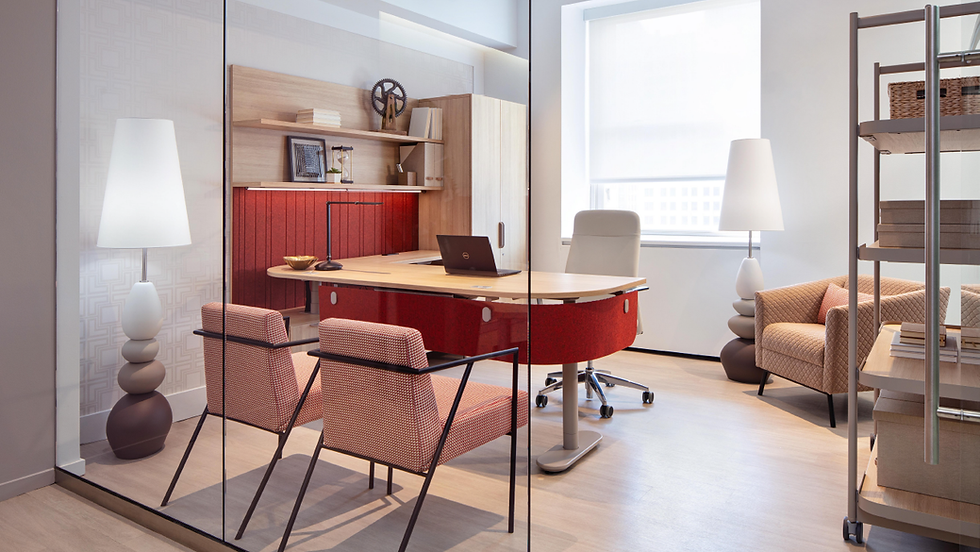Why Workplace Design is the Most Powerful Business Strategy We’re Not Talking About
- kershnerofficeinc
- Aug 21
- 2 min read

Most companies obsess over technology, marketing, or financial planning as their big strategies, yet overlook the very stage on which their business is performed: the workplace itself. The design of your space is not decoration, it is a living, breathing strategy that impacts performance, energy, and culture every single day. The walls, the layout, the lighting, the furniture, they aren’t just features, they are silent forces that shape behavior, influence decisions, and define the pace of progress.
Workplace design is not about chairs and desks. It’s about unlocking human potential. When people walk into a space that feels intentional, they rise to meet it. When a workspace supports their comfort, energy, and focus, it becomes a competitive advantage. The environment sets the tone long before a meeting begins or a deal is signed, it tells your people and your clients who you are, what you value, and how you operate. That story matters more than most leaders realize.
The most successful organizations are already using space as a weapon. They build environments that inspire bold thinking, amplify energy, and send a clear signal of strength. A well-designed workplace can accelerate growth just as much as a marketing campaign or product launch, sometimes even more. Because when people feel aligned with their environment, they work with greater clarity, intensity, and purpose.
What’s wild is how overlooked this strategy often is. Leaders will analyze every dollar spent on software or training, yet rarely invest the same thought into the actual arena where their people spend the majority of their waking hours. But think about it, the office is the heartbeat of your brand. It influences creativity, decision-making, retention, and even how outsiders perceive your company. Ignoring it is like building a championship team and then forcing them to play on a broken field.
Design also future-proofs your business. Markets shift, technology evolves, and industries transform, but a workplace designed with adaptability in mind can flex with the times. It’s not static; it’s a strategy that grows with you, anticipating change and giving your organization the agility to face whatever comes next. The businesses that understand this don’t just survive transitions, they dominate them.
And let’s not forget the emotional impact. People don’t remember spreadsheets or quarterly updates, they remember how they felt in a space. They remember the light pouring in on a morning meeting, the buzz of energy in a room that feels alive, the sense of pride in bringing a client to an environment that tells your story without a word. A powerful workplace creates moments that linger, shaping loyalty and identity in ways no policy ever could.
So here’s the truth: workplace design isn’t an afterthought. It’s not cosmetic. It’s the hidden engine behind performance, brand identity, and growth. The companies bold enough to recognize that and invest in spaces that empower their people, are already playing on a different level. Everyone else is still talking about business strategy, while the smartest leaders are sitting in it.




Comments